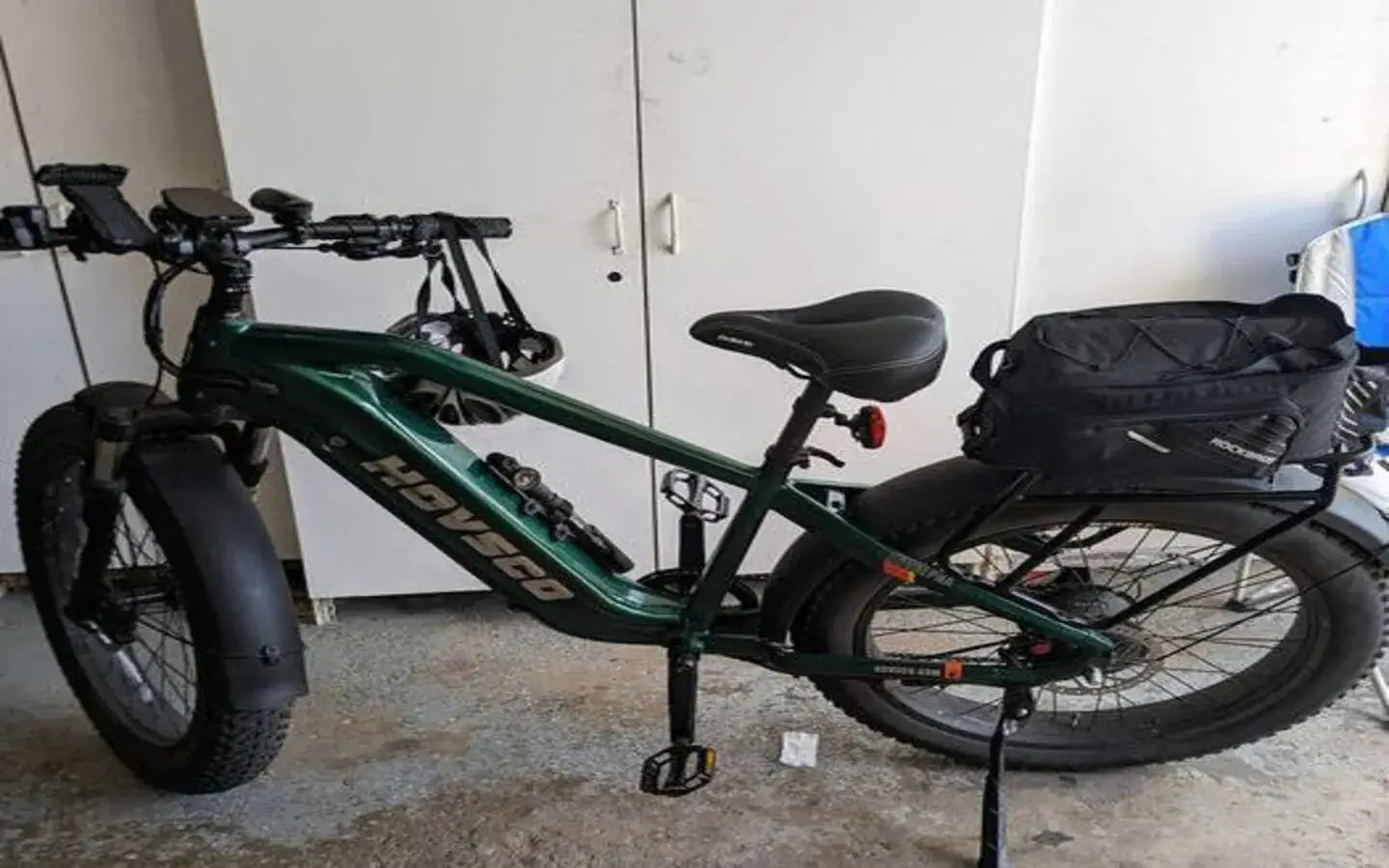
- by LiuJiazhu
What Durable Off-Road eBike Tires Excel on Rocky Terrain?
- by LiuJiazhu
Maxxis Minion DHF, Schwalbe Magic Mary, and Vittoria Martello excel on rocky terrain with aggressive treads, reinforced sidewalls (e.g., DoubleDown casing), and dual-compound rubber for durability. Tubeless setups enhance pinch-flat resistance. Prioritize tires with 120+ TPI casings and 5mm+ knobs for grip. These models balance traction, puncture resistance, and stability on jagged surfaces. Why Choose HOVSCO Durable Electric Mountain Bikes?
Aggressive tread patterns, reinforced sidewalls, and high-TPI casings are critical. Tires like the Maxxis Minion DHF use staggered knobs for grip, while Schwalbe’s Addix Soft compound enhances rock adhesion. Kevlar layers (e.g., Vittoria’s TLR) prevent punctures from sharp edges.
Rocky terrain demands tires that can withstand abrasion, impacts, and lateral forces. Deep treads (5-6mm) dig into uneven surfaces, while multi-ply casings (e.g., Maxxis DoubleDown) protect against sidewall tears. For eBikes, which are heavier and faster, tires need dual-compound rubber—firmer centers for rolling efficiency and softer edges for cornering.
Pro Tip: Always check sidewalls for “EXO” or “DH” ratings indicating reinforced construction. Imagine hiking boots: Vibram soles (tread) grip rocks, while ankle support (sidewalls) prevents twists. Without these features, tires risk premature wear or blowouts.
| Feature | Maxxis Minion DHF | Schwalbe Magic Mary | Vittoria Martello |
|---|---|---|---|
| Tread Depth | 5.5mm | 5.2mm | 4.8mm |
| Sidewall | DoubleDown | SuperGround | 4C Compound |
| Puncture Layer | TR | Snakeskin | TLR |
Staggered knobs, wide channels, and variable spacing optimize grip and debris clearance. The Schwalbe Magic Mary uses inverted center knobs to “claw” into rocks, while Vittoria’s Martello employs zigzag siping for multi-directional traction.
Beyond tread design, the shape and arrangement of knobs dictate how tires handle sharp edges. Square-edged blocks (e.g., Minion DHF) provide predictable braking, while ramped knobs reduce rolling resistance. But what happens when tires face loose over hardpack? Widely spaced knobs shed gravel quickly, preventing slippage.
Pro Tip: Match front/rear treads—aggressive patterns upfront for steering, faster-rolling rears for drive. For example, pairing a Maxxis Assegai (front) with DHR II (rear) balances control and efficiency. Think of it like a mountain bike’s suspension: treads must adapt instantly to irregular surfaces without losing momentum.
Wider tires (2.6”-3.0”) boost stability by increasing contact patches and absorbing impacts. They allow lower PSI (18-25) without pinch flats, conforming to jagged rocks. Narrower tires (2.4” or less) risk bouncing unpredictably on technical sections.
In practical terms, wider tires act like a suspension system, distributing force across a larger area. For eBikes, which average 50+ lbs, 3.0” tires with reinforced casings (e.g., Maxxis WideTrail) prevent rim strikes. But how wide is too wide? Beyond 3.0”, steering slows, and weight increases—problematic for climbs.
Pro Tip: Pair width with rim internal width: 35mm rims for 2.8” tires optimize sidewall support. Picture a snowshoe: larger surface area prevents sinking, just as wide tires “float” over rocks.
| Width | Pros | Cons |
|---|---|---|
| 2.6” | Balanced grip/weight | Limited cushioning |
| 2.8” | Improved compliance | Heavier |
| 3.0” | Maximum stability | Reduced agility |
Lower pressure (18-25 PSI) enhances grip by allowing tires to conform to rocks, but requires tubeless setups to avoid pinch flats. Higher pressure (25+ PSI) reduces rolling resistance but compromises traction and increases vibration.
Practically speaking, finding the “sweet spot” depends on rider weight and tire volume. A 180-lb rider on 2.8” tires might run 22 PSI tubeless for optimal compliance. But what if you’re carrying gear? Add 1-2 PSI per 10 lbs of load.
Pro Tip: Use a digital gauge—analog ones often misread by ±3 PSI. Imagine a basketball: overinflated, it bounces wildly; underinflated, it grips the court. Similarly, tires need enough give to mold around obstacles without squirming.
Yes—abrasion-resistant sidewalls (e.g., Schwalbe’s Super Trail) prevent cuts from sharp rocks. Dual-ply casings (Maxxis DH) add 150-200g per tire but double impact resistance, critical for eBike speeds and weights.
Why risk sidewall failure? A single slice from a granite edge can strand riders miles from trails. Materials like 60 TPI nylon with Kevlar strips (Vittoria’s BlackBelt) offer tear resistance without stiffness. Pro Tip: Inspect sidewalls after rides for scuffs or fraying—early signs of wear. Think of it as body armor: sacrificing a little flexibility for life-saving protection.
Tubeless setups dominate rocky terrain—they eliminate pinch flats, allow lower PSI, and self-seal minor punctures. However, they require sealant replenishment every 3-6 months and compatible rims.
Consider this: hitting a square-edged rock at 20 mph can generate 1,000N of force—enough to pinch a tube. Tubeless tires absorb this via air volume, not rubber. But are they foolproof? Sealant can’t fix sidewall gashes, so carry a plug kit.
Pro Tip: Use 2-3oz of sealant per tire for faster sealing—it’s the difference between a quick fix and a hike-out.
Yes, 2.6”-3.0” tires provide stability and cushioning, reducing fatigue and pinch flats on jagged surfaces.
Do tubeless tires handle rocks better than tubed?Absolutely—tubeless setups allow lower pressure for grip and self-seal punctures, critical for sharp-edged terrain.
Share:
How To Maintain A Waterproof Off-Road Ebike Battery?
Which Off Road Electric Bike Is Best in 2025? A Complete Guide